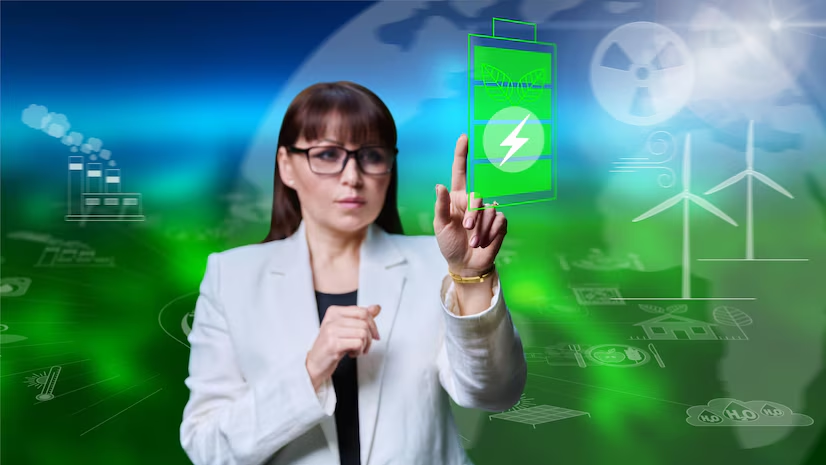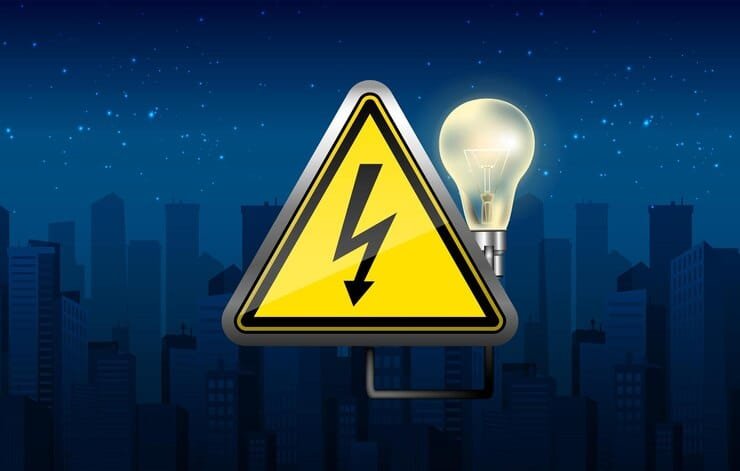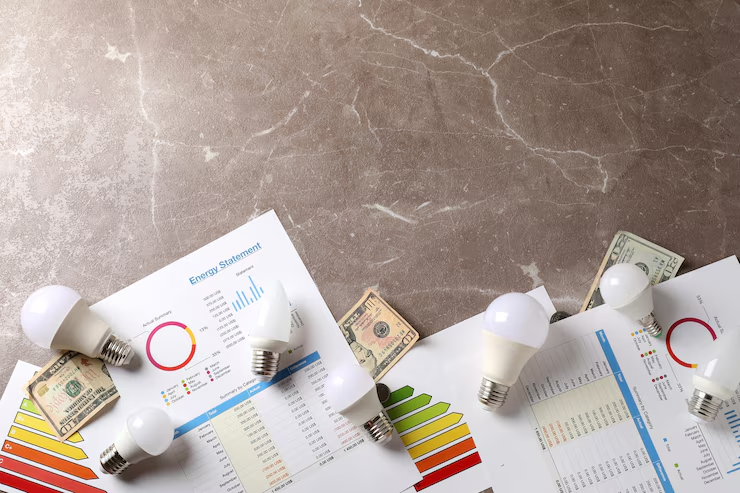Energy Revolution: How Mega-Projects are Reshaping Consulting & Utilities Forever
Energy Revolution: How Mega-Projects are Reshaping Consulting & Utilities Forever
Overview:
Forget leisurely afternoons spent analyzing spreadsheets – the energy sector is on fire! Massive projects, from gigawatt-scale renewables to smart grid overhauls, are transforming the landscape faster than a Tesla can charge. This isn’t just about bigger numbers; it’s about a fundamental shift in how we approach energy development, consulting, and utility management. This blog post dives into that exciting—and sometimes chaotic—new reality.
- The Mega-Project Boom: We’re witnessing an unprecedented surge in the size and complexity of energy projects. Think offshore wind farms stretching further than your commute, solar farms the size of small cities, and battery storage solutions rivaling power plants. This scale demands a completely different approach to project management, finance, and risk assessment than ever before.
- Consulting’s New Frontier: Energy consulting isn’t just about advising on efficiency improvements anymore. Now, consultants are playing crucial roles in navigating the complexities of securing permits for massive projects, managing supply chains across continents, and ensuring these projects are not only profitable but also environmentally sustainable. It’s a high-stakes game with big rewards.
- Utilities Under Pressure (and Opportunity): Traditional utilities are facing monumental challenges, adapting to a decentralized energy landscape dominated by renewables and new technologies. However, this also presents a huge opportunity. Those utilities that can embrace innovation and strategically participate in these mega-projects will not only survive but thrive in the new energy order.
- The Skills Gap: This revolution demands a new breed of energy professionals. Expertise in areas like digitalization, data analytics, and complex project finance is becoming increasingly critical. Are you and your team equipped to handle this next generation of energy challenges?
- What’s Ahead: This post will explore the key challenges and opportunities presented by this mega-project boom, examining how consulting firms are evolving, how utilities are adapting, and what this means for the future of the energy industry. Get ready to learn how to navigate this exciting, fast-paced revolution.
Energy Project Development Market Trends: A Scannable Analysis
The energy project development market is undergoing a rapid transformation, presenting both exciting opportunities and significant challenges. Here’s a breakdown of key trends, categorized for clarity:

I. Positive Trends:
- Renewable Energy Boom: The global shift towards decarbonization fuels explosive growth in renewable energy projects (solar, wind, hydro, geothermal). This trend is driven by increasingly stringent environmental regulations, falling technology costs, and growing consumer demand for clean energy. Actionable Insight: Companies should aggressively invest in renewable energy project development, focusing on innovative financing models and optimizing supply chains for faster deployment. Example: Ørsted’s successful transition from fossil fuels to offshore wind showcases a company capitalizing on this trend.
- Energy Storage Solutions Taking Off: The intermittency of renewables necessitates robust energy storage solutions (batteries, pumped hydro, etc.). This creates a massive market for developing and integrating storage technologies into energy projects. Actionable Insight: Companies should explore partnerships with storage technology providers and integrate storage solutions into project designs from the outset. Example: Tesla’s Powerwall and Powerpack are successfully integrating battery storage into residential and grid-scale applications.
- Digitalization & AI-Driven Optimization: Digital twins, AI-powered predictive maintenance, and data analytics are enhancing efficiency and reducing risks across the project lifecycle. Actionable Insight: Companies need to embrace digital technologies to optimize project design, construction, and operation. Example: Companies like Schneider Electric are leveraging AI to improve grid management and predict equipment failures.
- Decentralized Energy Systems: Microgrids and distributed generation are gaining traction, empowering communities and businesses with greater energy independence. Actionable Insight: Focus on developing modular and scalable projects adaptable to decentralized energy systems. Example: Numerous communities are adopting microgrids to increase resilience and reduce reliance on centralized grids.
II. Adverse Trends:
- Supply Chain Disruptions: Geopolitical instability and material shortages (e.g., rare earth minerals for wind turbines) pose significant challenges to project timelines and costs. Actionable Insight: Diversify supply chains, secure long-term material contracts, and explore alternative materials. Example: Many companies are now exploring regional sourcing and working with multiple suppliers to mitigate this risk.
- Regulatory Uncertainty & Permitting Delays: Complex permitting processes and fluctuating regulatory landscapes create delays and increase project costs. Actionable Insight: Engage early and proactively with regulatory bodies, build strong relationships with stakeholders, and ensure projects comply with all environmental and social standards. Example: Companies with robust stakeholder engagement strategies are more likely to navigate regulatory hurdles effectively.
- Financing Challenges: Securing project financing can be difficult, especially for large-scale projects with long lead times. Actionable Insight: Explore diverse funding options (e.g., green bonds, public-private partnerships), build strong investor relationships, and develop robust financial models demonstrating long-term profitability. Example: Successful project developers are proficient at demonstrating financial viability and long-term sustainability to investors.
- Inflation & Rising Interest Rates: Increased material and labor costs, coupled with higher interest rates, significantly impact project budgets and profitability. Actionable Insight: Optimize project designs to reduce costs, explore innovative financing options to mitigate interest rate risks, and accurately forecast inflation impacts.
By proactively addressing these trends, energy project development companies can navigate the evolving landscape, capitalize on emerging opportunities, and mitigate potential risks, ensuring long-term success in this dynamic market.
1. Healthcare: Hospitals are increasingly installing solar panels on their rooftops to reduce electricity costs and their carbon footprint. This reduces operating expenses and improves their sustainability image, attracting environmentally conscious patients and staff. A key takeaway is the potential for significant cost savings and enhanced brand reputation through on-site renewable energy generation.
- Technology: Data centers, which consume massive amounts of energy, are exploring energy-efficient designs and renewable energy sources. Some are partnering with wind or solar farms to power their operations, showcasing a commitment to sustainability and potentially securing cost advantages through long-term power purchase agreements. This demonstrates the strategic advantage of securing reliable and sustainable power for critical infrastructure.
- Automotives: Electric vehicle (EV) manufacturers are investing heavily in battery technology and charging infrastructure. This includes developing fast-charging stations and integrating renewable energy sources into their manufacturing processes. Strategically, securing reliable and affordable renewable energy for EV production is crucial for maintaining a competitive edge and meeting growing demand.
- Manufacturing: Factories are adopting energy-efficient equipment and processes to reduce operational costs. This includes installing smart meters to monitor energy consumption, implementing energy management systems, and integrating renewable energy sources like solar or biogas. The focus should be on a holistic approach, combining technological upgrades with renewable energy integration for maximum efficiency and cost reduction.
- Retail: Large retail chains are installing solar panels on their stores and distribution centers. This not only reduces their energy bills but also enhances their brand image and attracts environmentally conscious customers. The key strategic insight is the potential for both financial savings and improved customer perception through visible sustainability initiatives.
- Real Estate: Developers are increasingly incorporating energy-efficient designs and renewable energy systems into new buildings. This includes features like green roofs, energy-efficient windows, and solar panels. This demonstrates the growing market demand for sustainable buildings and the potential for higher property values and reduced operating costs. Strategic emphasis should be placed on meeting and exceeding evolving green building standards.
- Agriculture: Farms are utilizing solar power to run irrigation systems and other equipment, reducing reliance on fossil fuels and lowering operational costs. The strategic takeaway is the potential for increased efficiency and resilience in agricultural operations.
- Oil & Gas: Even within the traditional energy sector, companies are exploring carbon capture and storage technologies and investing in renewable energy projects to diversify their portfolios and meet evolving regulatory requirements. This shows a shift towards a more sustainable future, emphasizing the importance of adapting to changing market demands.
1. Strategic Partnerships for Portfolio Diversification (Inorganic): Since early 2023, several companies have formed alliances with firms specializing in different renewable energy sources. For example, a solar panel manufacturer partnered with a wind turbine developer to offer complete renewable energy solutions to clients, thus broadening their service offerings and reducing reliance on a single energy source’s market volatility. This allows them to capture a larger market share and mitigate risks associated with fluctuating demand for specific renewable energy technologies.
- Investing in Digitalization and AI for Efficiency (Organic): Companies are heavily investing in digital tools to enhance project planning, risk assessment, and cost management. One example is the use of AI-driven predictive maintenance for wind farms, allowing for early detection of potential equipment failures and minimizing downtime. This reduces operational costs and improves project profitability. Another company leveraged digital twins to simulate various project scenarios, optimizing designs before construction even begins.
- Expansion into Emerging Markets (Inorganic & Organic): Driven by the global energy transition, many companies are aggressively expanding into developing economies with high renewable energy potential. This involves both organic growth through establishing new offices and teams in these markets and inorganic growth through acquisitions of local energy companies. One notable example saw a major European energy firm acquiring a smaller company with established connections in the South American solar market, gaining immediate access to a new customer base and local expertise.
- Focus on Green Financing and ESG Initiatives (Organic): In 2023 and beyond, securing funding for energy projects is increasingly tied to environmental, social, and governance (ESG) performance. Companies are proactively implementing sustainable practices, obtaining relevant certifications, and reporting transparently on their ESG progress to attract investors seeking responsible investments. This includes prioritizing projects with lower carbon footprints and actively engaging with local communities.
- Developing Integrated Energy Solutions (Organic): Instead of focusing solely on individual energy sources, companies are creating comprehensive energy solutions incorporating renewable generation, storage, and smart grids. This holistic approach offers clients more reliable and cost-effective energy solutions, leading to increased customer loyalty and stronger market positioning. A company might bundle solar panel installation with battery storage and smart home energy management systems.
- Strengthening Supply Chains and Resource Management (Organic): Recognizing supply chain vulnerabilities, many firms are diversifying sourcing, establishing long-term contracts with key suppliers, and adopting strategies to improve resource efficiency throughout the project lifecycle. This ensures timely project delivery and cost control, especially important in a market with potential for material shortages.

Outlook & Summary: Powering Up the Future
The energy sector isn’t just changing; it’s undergoing a full-blown revolution. Mega-projects – think massive offshore wind farms, gigafactories for battery storage, and sprawling solar plants – are rewriting the rules of engagement for both energy project developers and the consulting firms advising them. The next 5-10 years will be a wild ride.
What to Expect:
- Mega-Project Dominance: Forget small-scale projects. The future belongs to massive, complex undertakings demanding specialized skills and unprecedented coordination. This means a shift from niche expertise to broad-based, multi-disciplinary teams within consulting firms.
- Tech-Driven Transformation: AI, machine learning, and digital twins are no longer futuristic concepts; they’re becoming indispensable tools for optimizing project design, managing risks, and accelerating timelines. Consulting firms that fail to embrace these technologies will be left behind.
- The Rise of the “Energy Integrator”: The lines between different energy sources are blurring. We’re moving towards integrated energy systems that seamlessly blend renewables, storage, and traditional generation. This requires consultants with cross-sector expertise to navigate the complexities of these interconnected systems.
- Sustainability as a Prime Directive: ESG (Environmental, Social, and Governance) factors are no longer a “nice-to-have”; they are essential to securing financing and public acceptance for mega-projects. Consultants must master these factors as project development hinges on it.
- Talent Acquisition Wars: The demand for skilled professionals in energy project development and consulting will skyrocket. Competition for talent will intensify, leading to higher salaries and a focus on employee retention and upskilling initiatives.
Key Takeaway: The energy consulting sector needs to adapt – quickly. To thrive in this era of mega-projects, firms must embrace technological innovation, cultivate cross-sector expertise, and prioritize sustainability. Failing to do so will mean missing out on the largest and most transformative projects of our time. It’s not just about advising on projects; it’s about shaping the future energy landscape.
The Big Question: Are your firm’s capabilities and strategies aligned with the rapidly evolving demands of the mega-project era?




